5145 Pholus is an eccentric centaur in the outer Solar System, approximately 180 kilometers in diameter, that crosses the orbit of both Saturn and Neptune. It was discovered on 9 January 1992 by American astronomer David Rabinowitz (uncredited) of UA's Spacewatch survey at the Kitt Peak National Observatory in Arizona, United States. The very reddish object has an elongated shape and a rotation period of 9.98 hours. It was named after the centaur Pholus from Greek mythology.
8405 Asbolus is a centaur orbiting in the outer Solar System between the orbits of Jupiter and Neptune. It was discovered on 5 April 1995, by James Scotti and Robert Jedicke of Spacewatch (credited) at Kitt Peak Observatory in Arizona, United States. It is named after Asbolus, a centaur in Greek mythology and measures approximately 80 kilometers in diameter.

(55565) 2002 AW197 (provisional designation 2002 AW197) is a classical, non-resonant trans-Neptunian object from the Kuiper belt in the outermost region of the Solar System, also known as a cubewano. With a likely diameter of at least 700 kilometers (430 miles), it is approximately tied with 2002 MS4 and 2013 FY27 (to within measurement uncertainties) as the largest unnamed object in the Solar System. It was discovered at Palomar Observatory in 2002.
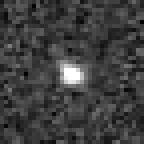
7066 Nessus is a very red centaur on an eccentric orbit, located beyond Saturn in the outer Solar System. It was discovered on 26 April 1993, by astronomers of the Spacewatch program at the Kitt Peak National Observatory in Tucson, Arizona. The dark and reddish minor planet is likely elongated and measures approximately 60 kilometers in diameter. It was named after Nessus from Greek mythology.
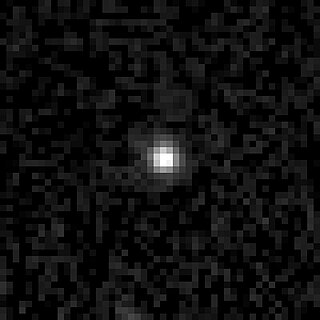
10199 Chariklo is the largest confirmed centaur. It orbits the Sun between Saturn and Uranus, grazing the orbit of Uranus. On 26 March 2014, astronomers announced the discovery of two rings around Chariklo by observing a stellar occultation, making it the first minor planet known to have rings.
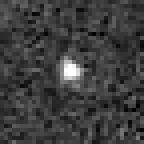
10370 Hylonome (; prov. designation: 1995 DW2) is a minor planet orbiting in the outer Solar System. The dark and icy body belongs to the class of centaurs and measures approximately 72 kilometers (45 miles) in diameter. It was discovered on 27 February 1995, by English astronomer David C. Jewitt and Vietnamese American astronomer Jane Luu at the U.S. Mauna Kea Observatory in Hawaii, and later named after the mythological creature Hylonome.
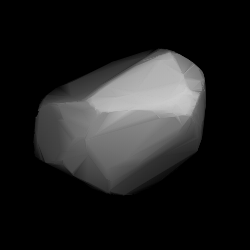
1088 Mitaka is a bright background asteroid from the inner regions of the asteroid belt. It was discovered on 17 November 1927, by Japanese astronomer Okuro Oikawa at the old Tokyo Astronomical Observatory in Japan. The stony S-type asteroid has a notably short rotation period of 3.0 hours and measures approximately 15 kilometers in diameter. It was named after the Japanese village of Mitaka.
(24835) 1995 SM55 (provisional designation 1995 SM55) is a trans-Neptunian object and member of the Haumea family that resides in the Kuiper belt, located in the outermost region of the Solar System. It was discovered on 19 September 1995, by American astronomer Nichole Danzl of the Spacewatch program at Kitt Peak National Observatory near Tucson, Arizona, in the United States. It measures approximately 200 kilometers in diameter and was the second-brightest known object in the Kuiper belt, after Pluto, until 1996 TO66 was discovered.
(79983) 1999 DF9 (provisional designation 1999 DF9) is a trans-Neptunian object of the Kuiper belt, classified as a non-resonant cubewano, that measures approximately 270 kilometers in diameter.
(35671) 1998 SN165 (provisional designation 1998 SN165) is a trans-Neptunian object from the Kuiper belt located in the outermost region of the Solar System. It was discovered on 23 September 1998, by American astronomer Arianna Gleason at the Kitt Peak National Observatory near Tucson, Arizona. The cold classical Kuiper belt object is a dwarf planet candidate, as it measures approximately 400 kilometers (250 miles) in diameter. It has a grey-blue color (BB) and a rotation period of 8.8 hours. As of 2021, it has not been named.
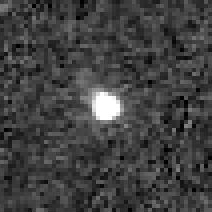
(40314) 1999 KR16 is a trans-Neptunian object on an eccentric orbit in the outermost region of the Solar System, approximately 254 kilometers (158 miles) in diameter. It was discovered on 16 May 1999, by French astronomer Audrey Delsanti and Oliver Hainaut at ESO's La Silla Observatory in northern Chile. The very reddish object is a dwarf planet candidate and has a rotation period of 11.7 hours.
3581 Alvarez, provisional designation 1985 HC, is a carbonaceous asteroid and a very large Mars-crosser on an eccentric orbit from the asteroid belt, approximately 13.7 kilometers in diameter. It was discovered on 23 April 1985, by American astronomer couple Carolyn and Eugene Shoemaker at the Palomar Observatory in California. The likely spherical B-type asteroid has a rotation period of 33.4 hours. It was named for scientists Luis Alvarez and his son Walter Alvarez.
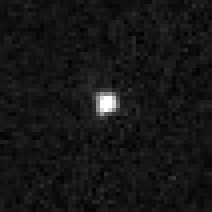
31824 Elatus (; provisional designation 1999 UG5) is a very red centaur from the outer Solar System, approximately 48 kilometers (30 miles) in diameter. It was discovered on 29 October 1999, by astronomers of the Catalina Sky Survey at Mount Lemmon Observatory in Arizona, United States. The minor planet was named after Elatus, a centaur from Greek mythology.

1188 Gothlandia, provisional designation 1930 SB, is a stony Florian asteroid from the inner regions of the asteroid belt, approximately 12 kilometers in diameter. Discovered by astronomer Josep Comas i Solà at the Fabra Observatory in 1930, the asteroid was later named after the ancient name of the Spanish autonomous community of Catalonia.
3800 Karayusuf, provisional designation 1984 AB, is a Mars-crossing asteroid and suspected binary system from inside the asteroid belt, approximately 2.5 kilometers in diameter. It was discovered on 4 January 1984, by American astronomer Eleanor Helin at the Palomar Observatory in California. The S/L-type asteroid has a short rotation period of 2.2 hours. It was named after Syrian physician Alford Karayusuf, a friend of the discoverer.

32532 Thereus (; provisional designation 2001 PT13) is a centaur from the outer Solar System, approximately 80 kilometers (50 miles) in diameter. It was discovered on 9 August 2001, by astronomers of the Near-Earth Asteroid Tracking program at the Palomar Observatory in California, United States. This minor planet was named for the phrase thēreios bia 'beastly strength', used to describe centaurs in Greek mythology.
(55638) 2002 VE95 (provisional designation 2002 VE95) is a trans-Neptunian object from the outermost region of the Solar System. It was discovered on 14 November 2002, by astronomers with the Near-Earth Asteroid Tracking program at the Palomar Observatory in California, United States. This resonant trans-Neptunian object is a member of the plutino population, locked in a 2:3 resonance with Neptune. The object is likely of primordial origin with a heterogeneous surface and a notably reddish color (RR) attributed to the presence of methanol and tholins. It has a poorly defined rotation period of 6.8 hours and measures approximately 250 kilometers (160 miles) in diameter, too small to be a dwarf planet candidate. As of 2021, it has not yet been named.
(469306) 1999 CD158 (provisional designation 1999 CD158) is a trans-Neptunian object from the circumstellar disc of the Kuiper belt, located in the outermost region of the Solar System. The relatively bright hot classical Kuiper belt object measures approximately 310 kilometers (190 miles) in diameter. It was discovered on 10 February 1999, by American astronomers Jane Luu, David Jewitt and Chad Trujillo at Mauna Kea Observatories on the Big Island of Hawaii, United States.

(82158) 2001 FP185 (provisional designation 2001 FP185) is a highly eccentric trans-Neptunian object from the scattered disc in the outermost part of the Solar System, approximately 330 kilometers in diameter. It was discovered on 26 March 2001, by American astronomer Marc Buie at Kitt Peak National Observatory in Arizona, United States.
12929 Periboea, provisional designation: 1999 TZ1, is a dark Jupiter trojan from the Trojan camp, approximately 54 kilometers (34 miles) in diameter. It was discovered on 2 October 1999, by American astronomer Charles W. Juels at the Fountain Hills Observatory in Arizona. Originally considered a centaur, this now re-classified Jovian asteroid has a rotation period of 9.3 hours and belongs to the 80 largest Jupiter trojans. It was named from Greek mythology after Periboea, mother of Pelagon by the river-god Axius.










